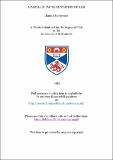A parallel implementation of SASL
Abstract
The applicative or functional language SASL is investigated from the point of view of an implementation. The aim is to determine and experiment with a run-time environment (SASL parallel machine) which incorporates parallelism so that constituent parts of a program (its sub-expressions) can be processed concurrently. The introduction of parallelism is characterised by two fundamental issues. The type of programs, referred to as parallel and the so called strategy of parallelism, employed by the parallel machine. The former concerns deriving a graph from the program text indicating the order in which things must be done and the notion of "worthwhile" parallelism. In order to obtain a parallel program the original (sequential) program is transformed and/or modified. Certain programs are found to be essentially sequential. Parallelism is expressed as call-by-parallel parameter passing mechanism and by a parallel conditional operator, suggesting speculative parallelism. The issue of the strategy of parallelism concerns the scheme under which a regime of SASL processors combine their effort in processing a parallel program. The objective being to shorten the length of computation carried out by the sequential machine on the initial program. The class of parallel programs seems to be non-trivial and it includes both non-numerical and numerical programs. The "speed-up" by appealing to parallelism for such programs is found to be substantial.
Type
Thesis, PhD Doctor of Philosophy
Collections
Items in the St Andrews Research Repository are protected by copyright, with all rights reserved, unless otherwise indicated.

